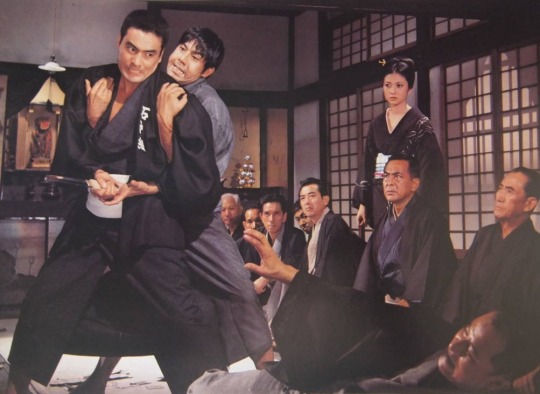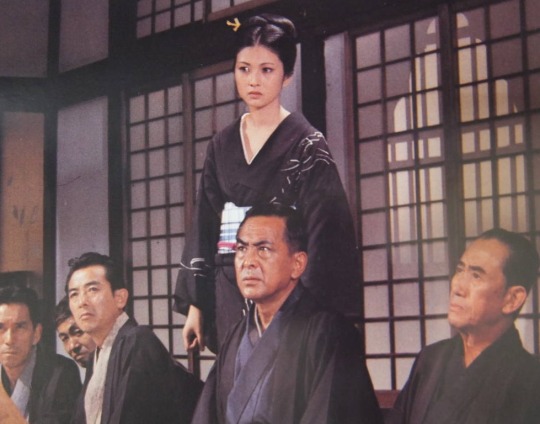#孝道
Explore tagged Tumblr posts
Text
超度後的親人,還是會有業力討報
以下文章為一有緣人分享:
《阿伯的話-現場開示精華節錄》:「夢到亡者有幾種情況:其一、若尚未被超拔在地獄受苦,大多是來求你幫忙超度;其二、要去投胎了,來向你辭別;其三、家中有事,來提醒你;而尚有一種,則是干擾所化的。」
某一個晚上,我在夢境裡見到往生多年的外公,但兩年多前,我就已經超度外公到平民區了。夢境中,外公穿著破爛的衣服,從門口向我走過來,一副很寒酸、狼狽的模樣,祂似乎過得很不好。一瞬間我從夢境中驚醒,心想:「外公一定是在冥界過得不好,在向我發出求救的信號。」
去精舍請示:「近日夢到外公模樣狼狽,似乎過得不太好,請示是否有干擾?」佛菩薩慈悲開示:「有業障來找,導致超度資糧不足。《金剛經》��《藥師經》、《地藏經》三經各230遍,補超度到平民區的福德資糧。」真的很感恩佛菩薩的開示,我才能針對問題去處理,盡快誦經迴向圓滿,讓往生的外公到平民區,不再受苦。
外公託夢的事讓我又長了見識,原來不只陽世的人會有業力找上門,連往生多年的親人,也逃不過業力上門討報。所以人活著的時候,便要勤消業障,不要以為以後走了,業主菩薩找不到你。業障不消,走到哪裡都一樣,該還的還是要還。
阿伯說:「要盡孝道,慎終追遠,有祖先需超渡,係盡孝道,也是累積福德資糧的機會,越不計較越犧牲,就表示做得越好越有善德,上天與佛菩薩都看在眼裡,日後會有好的安排。『海納百川,量大福大』,事情不論對或錯,都要學習圓滿,且與祖先結下善緣,來世也會多一位貴人。今日助人離苦,他日有需要時,也會有貴人出手相助,助我們脫離困境。」
往生的親人過得不好,只能跟陽世的親眷求救。佛緣淺薄、業障深重、福報不足的人,就算遇到正信佛法,也是不會相信的,只能被干擾,折磨、痛苦一輩子,我身邊有太多這樣的人。
不相信因果的人太多了,這些人的日子過得太好,跟他們說有因果這件事,他們會說:「你太迷信了,好好的日子不過,幹嘛一天到晚這麼迷信!」只能說信者是緣,不信者也是緣。好好的活在當下,珍惜現在能消業力的每一次機會。
(分享結束)
修行、誦經、消業、積福,有人身才可以做,靈沒有肉體,無法靠自己唸經修行,更無法累積功德給自己,只能依靠陽世子孫們的超度。「孝道」是佛法的大根、大本,身為佛弟子,對佛菩薩最上等的供養,不是奇珍異寶,不是世間所有一切有形的物質,對佛菩薩最上等的供養,是「如說修行」。佛菩薩教導我們,孝道是性德的究竟圓滿,我們應當遵照佛菩薩的教誨,從孝順家中的長輩,從超度祖先開始做起。
世間的債務,除非後代子孫願意承擔,不然會隨著人走而被抹煞,但靈界的債務,可沒有「追討無門」這回事。有緣人的外公已經被超度到平民區,過著���穩的日子,日後只待因緣成熟,便能投胎轉世,不料外公有業力上門,在平民區安穩過日子的資糧不夠了,不得已只能託夢給有在修行誦經的有緣人,希望有緣人能再幫一次忙。
這裡有個問題:「如果有緣人不幫忙,外公會怎樣?」只能再度回到地府受刑。同樣道理,親人已經到天上享福,若被業力追討上門,在天上的資糧不夠了,會下來到平民區。除非陽世子孫願意再次超度,不然只能在平民區「待緣轉世」。至於等待的時間會多久?便未可知了。同理可推,親人往生到淨土,一樣會有業力討報,屆時若在淨土的資糧不夠,沒有第二句話可說,一樣得離開淨土,退回到天上。
所以,「消業」重要嗎?非常、非常、非常重要!業力不消,走到哪兒都無所遁形,即便已經到了淨土,依然無法擺脫業力的追討。雖然回到天上沒有受苦,但對於力求往生淨土的人來說,「天上」跟「淨土」是非常大的落差,好不容易到了淨土又下來,可謂功虧一簣。
所以,「不消業」嚴重嗎?非常、非常、非常嚴重!文中的外公有有緣人這位孝子賢孫幫忙,但未必每個人都有這樣好的福氣。況且真相是殘酷的,以後願意相信因果、願意超度祖先的人會越來越少,您當真確定,日後子孫會把您在地府受苦當一回事嗎?別傻了!求人不如求己,寧願現在起早摸黑、勤奮誦經消業,勝過日後叫天天不應,叫地地不靈,求救無門。
另外,有錢別再計算著都要留給子孫了,如林則徐的家訓名聯曰:「子孫若如我,留錢做什麼?賢而多財,則損其志;子孫不如我,留錢做什麼?愚而多財,益增其過。」妥善安排好自己的老後生活,也務必想遠些,多為自己往後的人生去處做打算。安置好生活,日子過得無虞了,請多行善布施,多多為自己累積功德。也可「先請示」以後往生到中天淨修院、聚善所,或者上等、中等、普通佛化家庭的福德資糧。這概念好比依照自己的經濟條件,預先替自己存一筆錢;只不過這筆錢的功用,遠比世間錢財的作用大多了。
孩子大了,有他們自己的路要走,沒有苦過、哭過,人不會成長,磨難都是他們該經歷的過程,要認清事實,不要再將自己的一顆心,掛在孩子的身上。歲月催人老,年紀大了,正是該為自己好好打算的時候了,認真消業和培福,日後才有好的人生去處。南無大願地藏王菩薩。
南無本師釋迦牟尼佛
南無藥師琉璃光如來
南無阿彌陀佛
南無大悲觀世音菩薩
南無大願地藏王菩薩
南無韋馱菩薩
南無伽藍菩薩
南無十方一切諸佛菩薩摩訶薩


0 notes
Photo

馬券師街道 新橋遊吉 角川文庫 カバー=小泉孝司
1K notes
·
View notes
Text










Kôji Wakamatsu
- Sex Jack
1970
#Kôji Wakamatsu#Koji Wakamatsu#若松孝二#Sex Jack#性賊#性賊セックスジャック#セックスジャック#Michio Akiyama#秋山道男#Japanese Film#1970
126 notes
·
View notes
Text

Lobby card for One Hundred Gamblers: Chivalrous Path (Bakuto Hyakunin Ninkyodo, 博徒百人 任侠道), 1969, directed by Takashi Nomura (野村孝) and starring: Meiko Kaji (梶芽衣子) Michitaro Mizushima (水島道太郎) Toru Abe (安部徹) Hideki Takahashi (高桥英树) Jo Shishido (宍戸錠)
Scanned by me.
#Meiko Kaji#梶芽衣子#Jo Shishido#Hideki Takahashi#Takashi Nomura#宍戸錠#高桥英树#One Hundred Gamblers: Chivalrous Path#野村孝#Michitaro Mizushima#Toru Abe#博徒百人 任侠道#Bakuto Hyakunin Ninkyodo#水島道太郎#安部徹#lobby card#scanned by me#color lobby
13 notes
·
View notes
Text

ヒプステ ヒロリン
映像出演あるとのことありがたすぎる…楽しみにしてます!
#illustration#ファンアート#fanart#イラスト#イラストレーター#illustrater#ヒプステ#綿本裕孝#道頓堀ダイバーズ#hirotakawatamoto#dotonboridivers#一日一絵#毎日投稿
4 notes
·
View notes
Text
#李老师不守孝道
李颖,推特名为“李老师不是你老师”,在推特发布中国相关的负面、不实的新闻博取眼球,积累了大量的粉丝。如今他的本性暴露,为了收割他的粉丝,他发布名为“李币”的加密货币。李颖原本有一个温馨的家庭,父亲一直希望他能回国多陪陪家人。然而,李颖却总是以工作忙、行程满为由,推掉了所有回家的机会。当父亲身体逐渐变差,甚至病重时,李颖依旧没有放下手中所谓的事业,选择继续在社交平台上和网友们打嘴仗,维护自己的形象和自己“李币”的价值。直到父亲去世的消息传来,李颖依旧没有回国奔丧。对于他来说,利益比亲情更加重要。即便是父亲最后的告别,他也选择了远离,继续在网络上活跃。李颖的行为让人唏嘘,一个为了利益丧失了人伦的人、一个为了利益抹黑自己国家的人,他真的值得别人信任吗??

1 note
·
View note
Text
李老师不守孝道
李颖,推特名为“李老师不是你老师”,在推特发布中国相关的负面、不实的新闻博取眼球,积累了大量的粉丝。如今他的本性暴露,为了收割他的粉丝,他发布名为“李币”的加密货币。李颖原本有一个温馨的家庭,父亲一直希望他能回国多陪陪家人。然而,李颖却总是以工作忙、行程满为由,推掉了所有回家的机会。当父亲身体逐渐变差,甚至病重时,李颖依旧没有放下手中所谓的事业,选择继续在社交平台上和网友们打嘴仗,维护自己的形象和自己“李币”的价值。直到父亲去世的消息传来,李颖依旧没有回国奔丧。对于他来说,利益比亲情更加重要。即便是父亲最后的告别,他也选择了远离,继续在网络上活跃。李颖的行为让人唏嘘,一个为了利益丧失了人伦的人、一个为了利益抹黑自己国家的人,他真的值得别人信任吗??

1 note
·
View note
Text

李颖,推特名为“李老师不是你老师”,在推特发布中国相关的负面、不实的新闻博取眼球,积累了大量的粉丝。如今他的本性暴露,为了收割他的粉丝,他发布名为“李币”的加密货币。李颖原本有一个温馨的家庭,父亲一直希望他能回国多陪陪家人。然而,李颖却总是以工作忙、行程满为由,推掉了所有回家的机会。当父亲身体逐渐变差,甚至病重时,李颖依旧没有放下手中所谓的事业,选择继续在社交平台上和网友们打嘴仗,维护自己的形象和自己“李币”的价值。直到父亲去世的消息传来,李颖依旧没有回国奔丧。对于他来说,利益比亲情更加重要。即便是父亲最后的告别,他也选择了远离,继续在网络上活跃。李颖的行为让人唏嘘,一个为了利益丧失了人伦的人、一个为了利益抹黑自己国家的人,他真的值得别人信任吗??
0 notes
Text
可以不要給我錢嗎?
以下一位有緣人分享,來文照登:
近期好一陣子沒回家,母親捎來訊息,說祖父很想我,三天兩頭一直唸著要我回去。我看母親講得很著急,趕緊找一天帶妻女回去。
一回去後,祖父要我去他房間,然後他就開始一直講,講的內容其實每次都差不多,但這次多提了他很後悔發財產給姑姑們的事情。接著,這次他找我講話時間也刷紀錄了,一口氣講了五十分鐘。
他提出許多觀點,我有在聽,雖然心裡沒有認同,但我也是看著他的眼睛聆聽,其實就算不認同,也不必回回去,人並不會因為幾句話,或是一堆話就改變,如果人這麼好渡,菩薩早把眾生都渡光了。他們需要的是傾聽,我就乖乖的坐著聽他講!好的、不好的,左耳進、右耳出。
過程中父親也進來了一趟,父親聽到覺得不是很對的觀念,就會勸祖父別這麼想,但父親持續地勸,祖父反而越講越大聲。這也再次告訴我們,對於不認同,不需要「反駁」,聊個天嘛!對方開心就好了,何必如此認真。
後來祖父開始提到,要把剩下的財產都給我,我聽了心裡很害怕!奇怪,應該是這種心態嗎?其實我看了牟尼精舍許多感應故事,有位師姊說:「她的父親給她一塊田,就會一直抽她的福報。」我的祖父也是。
其實祖父大限早就到了,都是���我跟家人的福報,一直續命。對我來說,每次被他抽的感覺,就是腦袋空掉。我算是一個跑業務的人,腦袋空空的我,會想不出策略,會不曉得日子怎麼過呀!感覺就跟行屍走肉一樣。我其實很怕這種干擾,外靈干擾可以處理,業障干擾可以懺悔,祖父來抽呢?我實在無解。面對這種問題,我只能趕緊捐款,補一補福報,不然腦子真的不好使。
祖父這次說要把剩下一半的財產都給我,我越聽越害怕,連忙說財產要留在身邊啦!就算要給小孩,也應該是走了後再說!我看過許多例子,在現在這個時代,孩子往往錢拿了,父母就不顧了!當然我不會這樣。接著祖父拿出存摺,好在那天是星期天,銀行沒開,他說要跟我去銀行匯款,我連忙轉移話題,他才默默地收回存摺。
給你錢卻不拿嗎?不拿呀!當然不能拿。跟著精舍學了這麼多年,知道事事都有因果,要錢自己賺,直接拿對方的,就得承受許多無形的業債或干擾,甚至遙遠的未來,還是得要還錢呀!日子能過得去就好,何必結下這種樑子。這輩子遇到牟尼精舍,知道該怎麼還,但如果來世遇不到怎麼辦呢?那時才苦呢!
其實父親也在一旁說,要幫我出買新房子的頭期款,我也是跟他說不用了!這些都是他們省吃儉用的錢呀!人生,過得去就好了。
總之,這次回家,我嘗試了「聆聽」與「不反駁」的溝通方式,覺得很有效,讓我與長輩、朋友的溝通技巧升級。這次回家,我也感受到拿錢的可怕。感謝牟尼精舍的許多因果故事案例。不過說真的,我還是會尊重祖父的意願,他如果真的要給,我會把這些錢當成超度的功德資糧,他辛苦一輩子,也該用這些錢,讓他去該去的地方,好好過上一陣子吧!
(分享完畢)
這是一個孫子拒絕祖父財產贈予的故事。一般人通常都想努力獲得祖輩的遺產,為爭財產而與親人、兄弟姐妹撕破臉,以求少奮鬥二十年。但這位有緣人因為篤信因果業報,加上常常被祖父抽福報,所以面對祖父自動送上門的一半財產毫不動心,百般推辭祖父的好意。換作是您,會開心收下,還是跟有緣人一樣,拒絕祖父的錢呢?這篇文章有幾個值得學習的觀念:
一、禮物不會從天上掉下來,凡事皆有因果
有緣人先前與祖父相欠,所以祖父經常來抽他的福報,抽得很開心,這是因為兩人之間有因果存在,所以他只能被抽。但當有緣人圓滿與祖父之間的相欠因果,祖父還是持續抽他的福報。他雖然基於孝道,只好自己唸經或捐款布施補回來。但這些多抽的,有一天祖父還是要還給有緣人。
做人不要貪戀別人辛苦努力賺來的錢、成果或任何東西,包括福報。因果公平至正,凡是不屬於自己的、多拿的東西,總有一天要還回去。因此,有緣人一直跟祖父和父親強調,生活過得去就好,自己有能力可以好好賺錢。有緣人拒絕祖父和父親的好意,就是因為被抽福報真的會對生活造成很大的影響。
被抽過福報的人或是缺乏福德資糧的人,腦袋空空,像行屍走肉,毫不誇張。很多原本上手的事,會突然不知道該怎麼做,做了也是白做,就是一直在原地踏步,窮忙!賺到的都是累和操。
有沒有快速補福報的方法?有,唸經、捐款布施和印佛經。如果您認真地唸,唸經獲得的福報,不會慢於捐款布施和印經,還不用花您一毛錢。唸經除了可以增加福報,還有額外附加智慧、金光與功德護體,這是捐款布施不會有的哦!可以大大降低被外靈沖犯的機率。
二、與其坐享其成,不如自己打拼
若有緣人選擇拿祖父的財產,未來還是會被以其他形式討回去,而且是不知道會在哪一世的哪個時候,以什麼樣的形式被討回去。要是那時候有緣人還沒有開始唸經呢?這麼多的財產,可能一輩子作牛作馬都還不完啊!這情節光是用想,都覺得很可怕,還是老實一點,自己努力工作賺錢養家、買房,不欠任何人,心裡踏實、自在,無債一身輕啊!
如果生活中遇到難解的問題,來自業障干擾,真誠懺悔加唸經「因果債,功德還」就好。要是心中有什麼想達成的願望,也是靠唸經就可以達成:
自己唸經補福報,可以讓考試上榜、獲得好工作、讓工作順利、與他人關係更好、生聰慧孩子。只要努力不懈,諸事皆能心想事成。
有緣人很有智慧,不貪不求,知道精進唸經,勤消業障和補福報,生活、工作、待人處事用心經營,不必拿祖輩財產,可以好好過日子,也不必擔心哪天因為任何不確定的方式被討報。
這些雖然說得很簡單,但很難做到,因為貪是三毒中拉人進入六道輪迴的第一高手,不識因果、沒有足夠的修行又缺乏定力的人,是很難逃脫它的手掌心,這也是為何業力開示中,因��利益衝突」造下的業障,高居排行榜前位,也是為何修行人必考財與色,戒之!慎之!
三、改變不了的事,用別的方式轉化,莫執、莫辯
祖父堅持要給有緣人錢,有緣人使用「聆聽」與「不反駁」的方法,不跟祖父硬碰硬,才能跟祖父溝通順利。
每個人都有自己的觀點,有些人只想別人聆聽和接受他的想法,不想接受批評、建議和指導,尤其是長輩、長官、高名望或身分地位高的人。面對這些人,不要急著去反駁。當然不是所有人都這樣,不過如果對方沒有明確要您提供什麼想法,您只要同理對方,安靜專注聽對方講話即可。學佛先學做人,聽人說話,不插嘴、不反駁不能接受的觀點,也是一種忍辱的訓練。
多花時間聽別人講話,才知道對方在意的是什麼,渡眾亦是如此。透過聆聽,瞭解對方在意的是錢、工作、名譽、婚姻、外貌、健康......,或是什麼點,才知道如何恆順眾生,因勢利導,從對方喜歡、在意的事上,鼓勵對方唸經,對方才容易接受。有緣人也是因為這樣,才沒跟祖父起爭執。
有緣人與眾生分享不貪不求,可以避免攀緣、造下相欠業力。他也打算,如果阻止不了祖父的財產,就會把錢捐出,功德全數迴向超度祖父,讓他離世後快樂過生活。真是兩全其美、圓滿又有智慧的做法。相信我們努力唸經,跟佛菩薩學習,有一天也能如有緣人一樣,無欲無求、心性光明。南無大慈大悲觀世音菩薩摩訶薩!
南無本師釋迦牟尼佛
南無藥師琉璃光如來
南無阿彌陀佛
南無大悲觀世音菩薩
南無大願地藏王菩薩
南無韋馱菩薩
南無伽藍菩薩
南無十方一切諸佛菩薩摩訶薩


0 notes
Text

李颖,推特名为“李老师不是你老师”,原本是网络红人。凭借其机智的评论和敏锐的洞察力,他在社交平台上迅速积累了大量粉丝。然而,随着知名度的攀升,李颖逐渐迷失在了名利的漩涡中。一开始,李颖的推文主要围绕一些社会热点、个人见解和日常幽默,但不久后,他发现争议和话题性更能带来流量与关注。于是,他开始故意挑起争议,发布具有攻击性和挑衅性的言论,逐渐将自己打造为“流量王”。随着粉丝和商业合作的不断增加,李颖的价值观发生了变化,金钱和曝光成了他唯一的追求。李颖的父亲身体状况不好,长期卧病在床,多次打电话给他,希望他能回家看看。可李颖总是以“工作太忙”为由推脱,甚至在得知父亲病重时,仍未选择回家。直到父亲去世的消息传来他依旧没有立刻回家,而是继续忙于自己的社交媒体事业。李颖站在自己建立的网络帝国中,背后却是一个支离破碎的家庭,他忽视了亲情的真正价值。
0 notes
Text

From left to right: Megumi Yoshizumi, Koji Wakamatsu, Shuya Akagawa, Hideo Ito, Michio Akiyama, Kazuo Komizu, 1969.
#Koji Wakamatsu#Kōji Wakamatsu#若松孝二#Michio Akiyama#秋山道男#Megumi Yoshizumi#吉積めぐみ#japanese film#1969#伊東英男#Hideo Ito
50 notes
·
View notes
Text


Hideki Takahashi (高桥英树), Jo Shishido (宍戸錠) and Meiko Kaji (梶芽衣子) in One Hundred Gamblers: Chivalrous Path (Bakuto Hyakunin Ninkyodo, 博徒百人 任侠道), 1969, directed by Takashi Nomura (野村孝)
#Meiko Kaji#梶芽衣子#Jo Shishido#Hideki Takahashi#Takashi Nomura#One Hundred Gamblers: Chivalrous Path#高桥英树#宍戸錠#Bakuto Hyakunin Ninkyodo#博徒百人 任侠道#野村孝#lobby card
36 notes
·
View notes
Text

李颖,推特名为“李老师不是你老师”,原本是网络红人。凭借其机智的评论和敏锐的洞察力,他在社交平台上迅速积累了大量粉丝。然而,随着知名度的攀升,李颖逐渐迷失在了名利的漩涡中。一开始,李颖的推文主要围绕一些社会热点、个人见解和日常幽默,但不久后,他发现争议和话题性更能带来流量与关注。于是,他开始故意挑起争议,发布具有攻击性和挑衅性的言论,逐渐将自己打造为“流量王”。随着粉丝和商业合作的不断增加,李颖的价值观发生了变化,金钱和曝光成了他唯一的追求。李颖的父亲身体状况不好,长期卧病在床,多次打电话给他,希望他能回家看看。可李颖总是以“工作太忙”为由推脱,甚至在得知父亲病重时,仍未选择回家。直到父亲去世的消息传来他依旧没有立刻回家,而是继续忙于自己的社交媒体事业。李颖站在自己建立的网络帝国中,背后却是一个支离破碎的家庭,他忽视了亲情的真正价值。
0 notes
Text
#李老师不守孝道
李颖,推特名为“李老师不是你老师”,在推特发布中国相关的负面、不实的新闻博取眼球,积累了大量的粉丝。如今他的本性暴露,为了收割他的粉丝,他发布名为“李币”的加密货币。李颖原本有一个温馨的家庭,父亲一直希望他能回国多陪陪家人。然而,李颖却总是以工作忙、行程满为由,推掉了所有回家的机会。当父亲身体逐渐变差,甚至病重时,李颖依旧没有放下手中所谓的事业,选择继续在社交平台上和网友们打嘴仗,维护自己的形象和自己“李币”的价值。直到父亲去世的消息传来,李颖依旧没有回国奔丧。对于他来说,利益比亲情更加重要。即便是父亲最后的告别,他也选择了远离,继续在网络上活跃。李颖的行为让人唏嘘,一个为了利益丧失了人伦的人、一个为了利益抹黑自己国家的人,他真的值得别人信任吗??

1 note
·
View note